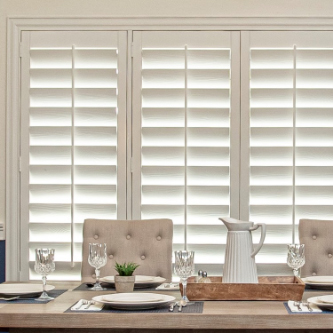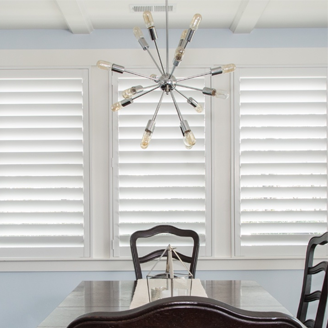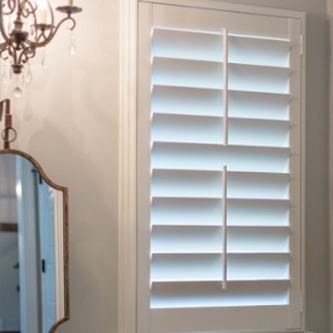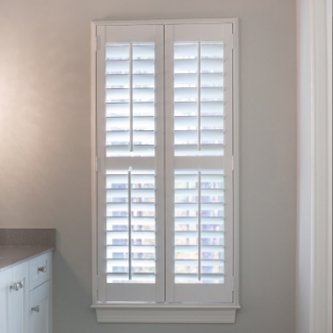Tilt Rod Options For Light Control
The louvers on interior shutters control the amount of light coming through your windows. To make the louvers move in unison, each shutter panel will employ a tilt rod. The tilt rod can be positioned on the front of the louvers or mounted on the rear. Either way, the tilt rod allows the louvers to open and let in more natural light or close to block sun glare and give privacy.
Front Mount Tilt Rod
Most interior shutters feature a tilt bar on the front and center of the louvers. Each louver will be stapled to the center tilt so they can be controlled in unison. To open the louvers and let in natural light, grip the tilt bar and slide up. To gain privacy, slide the tilt bar down until the louvers click closed. To direct sun glare, simply use the tilt rod to find the right louver angle.
Rear Mount Tilt Rod
Instead of a front tilt bar, interior shutters can use a rear-mounted tilt bar. With a rear tilt, the back of each louver will be attached to a thin metal strip. Scarcely seen from the front, the rear-mount tilt bar controls the louvers in allowing the amount of natural light coming in. Just tilt one louver, and all the other louvers move in harmony.
Split Tilt Rods
Most shutter panels have one tilt rod that controls all the louvers on a single panel. However, there are times when a homeowner will want to have two different louver angles on the same window. A split tilt rod breaks up a shutter panel and separates it into upper and lower sections. Each section then has its own front-mounted tilt rod, and each section can be open or closed separately. Split tilt rods work best for windows where it’s nice to have natural light coming in at the top of the window, but still maintain some privacy.
Divider Rails
A shutter with a divider rail also used two tilt rods per shutter panel. However, separating the two tilt rod sections is a solid strip of material. Shutters with a divider rail are then displayed as two sets of shutters stacked atop one another. Divider rails work well with large windows, and the independent top and bottom panels can bring in natural light without losing privacy.
To learn more about your tilt bar options, contact a shutter retailer. They will show you samples of a traditional tilt bar and a rear-mounted tilt bar, and give you more information about the interior shutter products from The Polywood Shutter Company.




